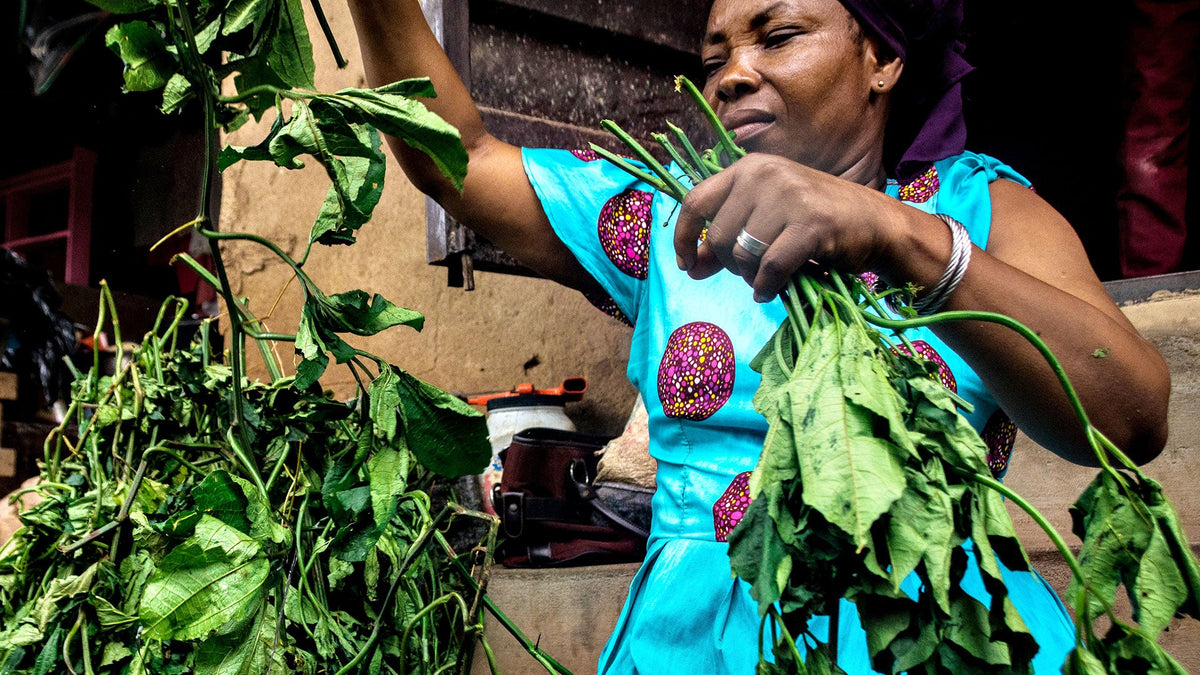
Exploring African Wild Edible Plants Beyond Superfoods
|
|
Time to read 4 min
|
|
Time to read 4 min
Wild edible plants are the original soul food—untamed, nutrient-rich, and bursting with ancestral wisdom. Long before supermarkets and monocrops, foraged foods nourished and healed generations across the continent. These wild foods weren’t just survival tools—they were sacred, flavorful links to land, lineage, and longevity.
Even today, in kitchens across West Africa, the tradition of foraging remains alive and vital. Many of the most cherished ingredients in countries like Nigeria, Cameroon, and Côte d'Ivoire are still not professionally cultivated—they’re harvested from the wild, just as they have been for centuries. These traditional foods have quietly sustained communities and strengthened food security, embodying a deep-rooted resilience.
These ingredients are not fleeting trends or repackaged superfoods. They are treasures—culturally rich, nutritionally powerful, and essential to the story of African cuisine. It’s time to celebrate the diversity and depth of wild edible plants, and the powerful role they continue to play in West African food, culture, and the future of our plates.
Wild edible plants (WEP) have been a cornerstone of traditional West African diets for centuries. From the bustling local markets to rural villages, the cultural importance of these foraged ingredients is evident. Market stalls are brimming with produce, vegetables, roots, herbs, and spices foraged from the 'bush,' each with its own unique story. The knowledge of these wild ingredients has been passed down through generations, often orally, maintaining a living tradition that connects past to present. These plants have provided not only sustenance but also profound cultural value, highlighting the deep relationship between nature and culinary heritage.
The distinct flavors of West African dishes owe much to indigenous wild spices and herbs. In Nigeria, wild spices such as scent leaves (African blue basil) and in Cameroon - njangsang, for example, are still staples in cooking, even as imported spices and seasonings attempt to dominate the local culinary landscape. These wild spices contribute bold aromas and unique tastes that define traditional dishes and maintain their authentic character. However, challenges arise as imported seasonings become more popular, threatening the continued use of these local treasures. Preserving the role of these wild spices is essential for maintaining the rich culinary heritage of West Africa.
The diversity of wild edible plants used in West African cuisine is astounding. These plants can include leaves, stems, fruits, seeds, roots, and even barks—each part playing a role in creating diverse and nutritious meals. Traditional preservation methods such as sun drying, shade drying, and fermentation have been used for generations to extend the availability of these foods. These techniques not only sustain food availability throughout the year but also contribute to the biodiversity of local diets, offering a range of flavors and nutrients that enrich the food culture of West Africa.
Ancient grains such as fonio, millet, and sorghum have played a significant role in West African diets for generations. Fonio, often called the "grain of life," is rich in amino acids, gluten-free, and easy to digest, making it an essential food source. These grains are cultivated using traditional methods, and they provide a nutritious base for many iconic dishes in the region. Fonio, for instance, can be used to create dishes like pilafs, porridges, and even baked goods, each showcasing the grain's versatility and rich history. Preserving the knowledge and farming practices related to these grains is crucial, as they contribute to the cultural and nutritional wealth of West Africa.
“When the roots are deep, there is no reason to fear the wind.”
When we think of African superfoods, baobab, moringa, and hibiscus might come to mind—all popular for their exceptional nutritional benefits. However, the term "superfood" often overshadows the broader significance of these ingredients. Many of them are true wild edible plants, foraged from the African bush and passed down through traditional knowledge. Beyond the well-known superfoods, there are many lesser-known but equally powerful wild ingredients such as nalta jute, horned melon, and monkey kola. These wild foods, while not widely recognized globally, have sustained communities for centuries, providing vital nutrition and unique flavors that deserve a place in modern cooking.
For the curious cook, incorporating wild edible plants into everyday meals is an adventure worth embarking on. From foraged greens to wild spices, these ingredients bring a burst of flavor and authenticity to dishes. Sourcing these ingredients might mean visiting local markets or exploring specialty stores that focus on African produce. Signature recipes, such as fonio pilaf or njangsang-spiced stews, can be adapted to incorporate modern twists while retaining their traditional essence. Pairing WEP with familiar ingredients allows for the creation of dishes that are both unique and deeply rooted in heritage—encouraging culinary explorers to experience the taste of West Africa.
The wild edible plants of Africa offer more than just nutrition—they provide a deep connection to cultural heritage and traditions. These ingredients have the power to diversify our plates and elevate our cooking experiences. Let’s continue exploring, preserving, and celebrating these remarkable foods. Ready to add something unique and truly authentic to your culinary adventures? Dive into our collection of wild edible plants today!




